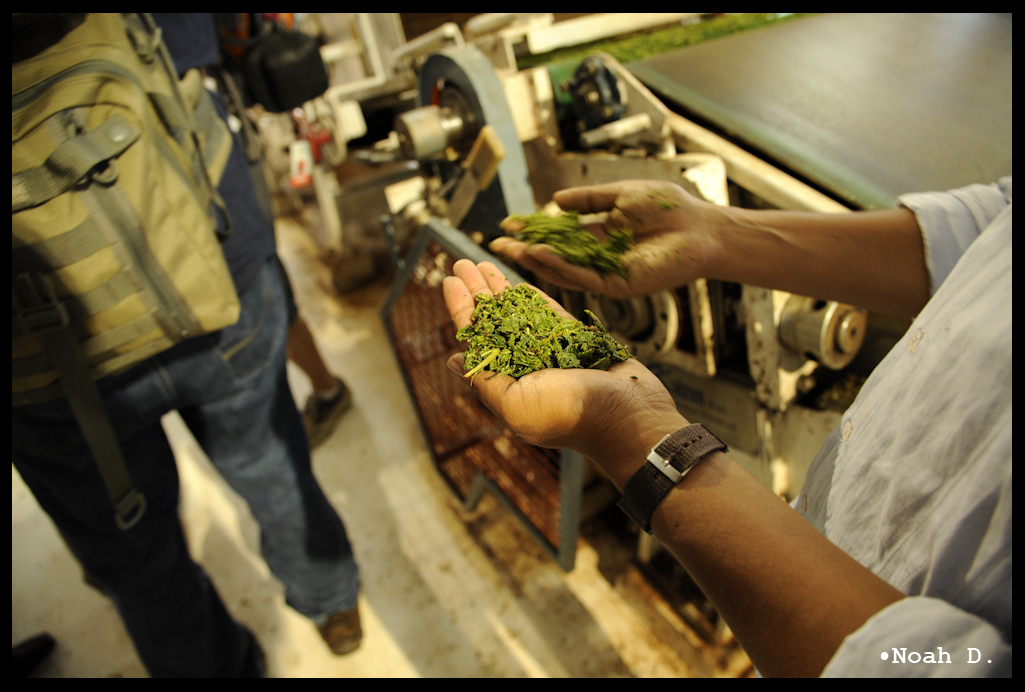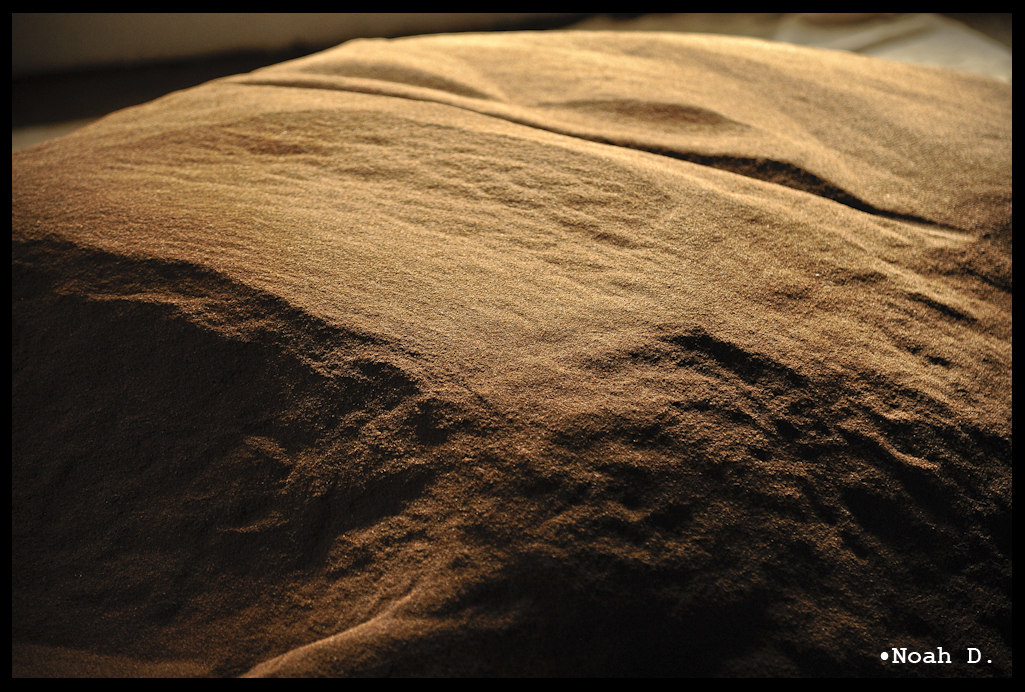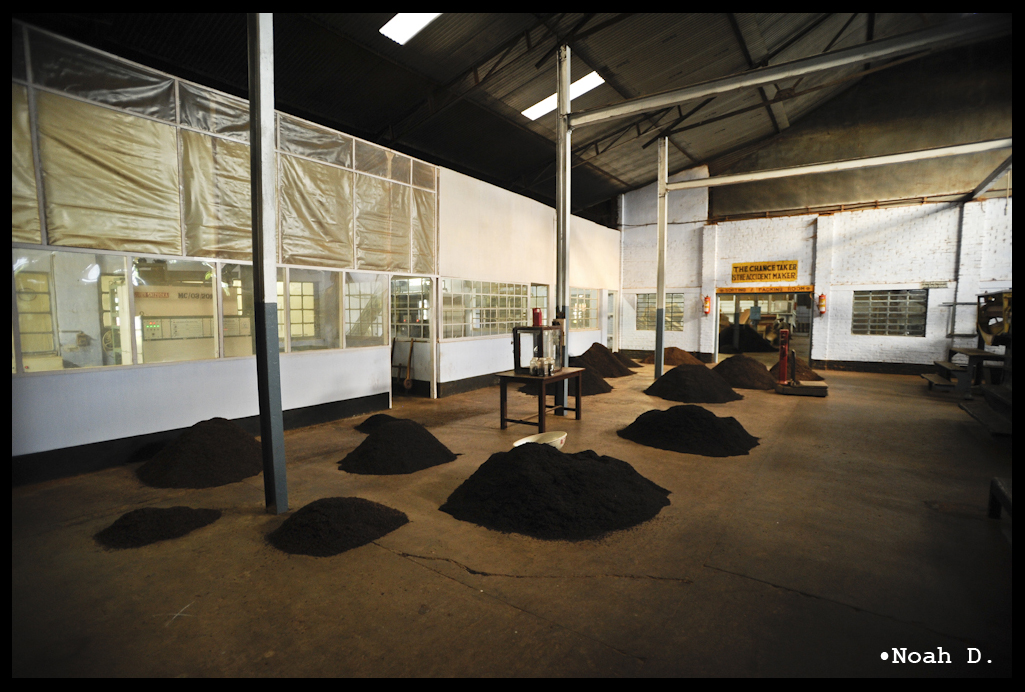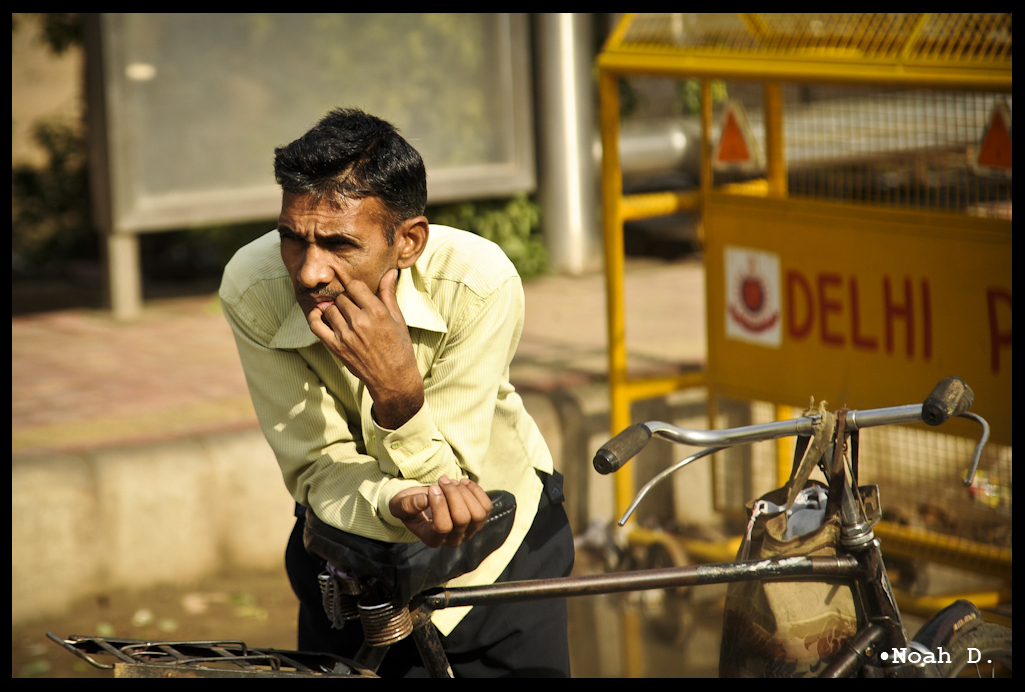If you were not aware, I am in India for a university sponsored study on the anthropology of tea.
 The mission is to know tea, learn how it is made, what makes it good, and a little bit about the people who make it happen… and drink it the most.
The mission is to know tea, learn how it is made, what makes it good, and a little bit about the people who make it happen… and drink it the most.
 So, how does it happen? After plucking, it is brought in and dried to a specific moisture content on huge driers.
So, how does it happen? After plucking, it is brought in and dried to a specific moisture content on huge driers.
Its then sacked up…
 …and moved to the next stage in the process.
…and moved to the next stage in the process.
 The dried tea is cut and rolled finer and finer…
The dried tea is cut and rolled finer and finer…
 …though a strange set of machinery and tumblers and belts.
…though a strange set of machinery and tumblers and belts.
 The tea is sent down a conveyer belt, put in bins and sent down the line again into the fermentation chamber.
The tea is sent down a conveyer belt, put in bins and sent down the line again into the fermentation chamber.
 NOTE: These are the moments when I am thankful that cameras can hold up to fairly extreme conditions. The temperature in this factory was near (if not more than) 100ºF and, in this particular room, off-the-charts humidity.
NOTE: These are the moments when I am thankful that cameras can hold up to fairly extreme conditions. The temperature in this factory was near (if not more than) 100ºF and, in this particular room, off-the-charts humidity.
After the tea is fermented, it gets put in the bins again and sent down the line again to the driers and sorters.
 The grains of tea are sorted by size by machines and get out all the debris that might have made it through the process this far.
The grains of tea are sorted by size by machines and get out all the debris that might have made it through the process this far.
In the end you have a few rooms with piles like this:
 That’s no sand dune, its a whole lot of mighty fine tea from the Etherwold estate in Dibrugarh, India.
That’s no sand dune, its a whole lot of mighty fine tea from the Etherwold estate in Dibrugarh, India.
Finally, the tea gets in the big bags to be shipped to the wholesale suppliers. All over the world.
 Now, no study of tea can go without tasting the uber-fresh tea… straight from the factory, right?
Now, no study of tea can go without tasting the uber-fresh tea… straight from the factory, right?
 There’s a place for that. In the courtyard of the factory, in fact.
There’s a place for that. In the courtyard of the factory, in fact.
 Of course, there are more than one way to make tea. In fact, that is ALL the difference! There is only one kind of tea plant and it yields all the different sorts of tea – green, white, black, gold, etc.
Of course, there are more than one way to make tea. In fact, that is ALL the difference! There is only one kind of tea plant and it yields all the different sorts of tea – green, white, black, gold, etc.
 Different factory, slightly different process for drying.
Different factory, slightly different process for drying.
I was there after hours, so… a little quiet, but interesting, nevertheless.
 Well, that’s that. At least the direct tea part.
Well, that’s that. At least the direct tea part.
Now, being in Dibrugarh, India, there is no shortage of portraits and ethnographic photojournalism. With a portrait of tea comes the portrait of the people closest to its source. These are from today only… and probably what most people come to this blog for anyway.
 One of my favorites from the day:
One of my favorites from the day:
Tonight we stayed at the Mancotta Tea Plantation house. It looks straight from the movies when the area was under the British crown.
I’m staying in the old servant’s quarters. You can keep your air conditioning, I’m going to open all the windows and listen to the rain fall on the tin roof.
 Tonight we were also treated to some music and dancing by some of the locals.
Tonight we were also treated to some music and dancing by some of the locals.
 The group is molding rather well. This is going to be an exciting three weeks.
The group is molding rather well. This is going to be an exciting three weeks.
 The students with Jeff Hopper in the fields of the Mancotta Tea Estate in Dibrugarh, India. (Students from left: Kathleen, Carrie, Kate, Stephen, Darren, Alan.)
The students with Jeff Hopper in the fields of the Mancotta Tea Estate in Dibrugarh, India. (Students from left: Kathleen, Carrie, Kate, Stephen, Darren, Alan.)
Stay tuned…
-Noah D.















1 Comment
I’ve really enjoyed looking at your pics and reading your blog while on this “Tea tour”. I am a friend of Mark and Tish; Alan, hope you’re having a great time seeing the sights of this beautiful world!